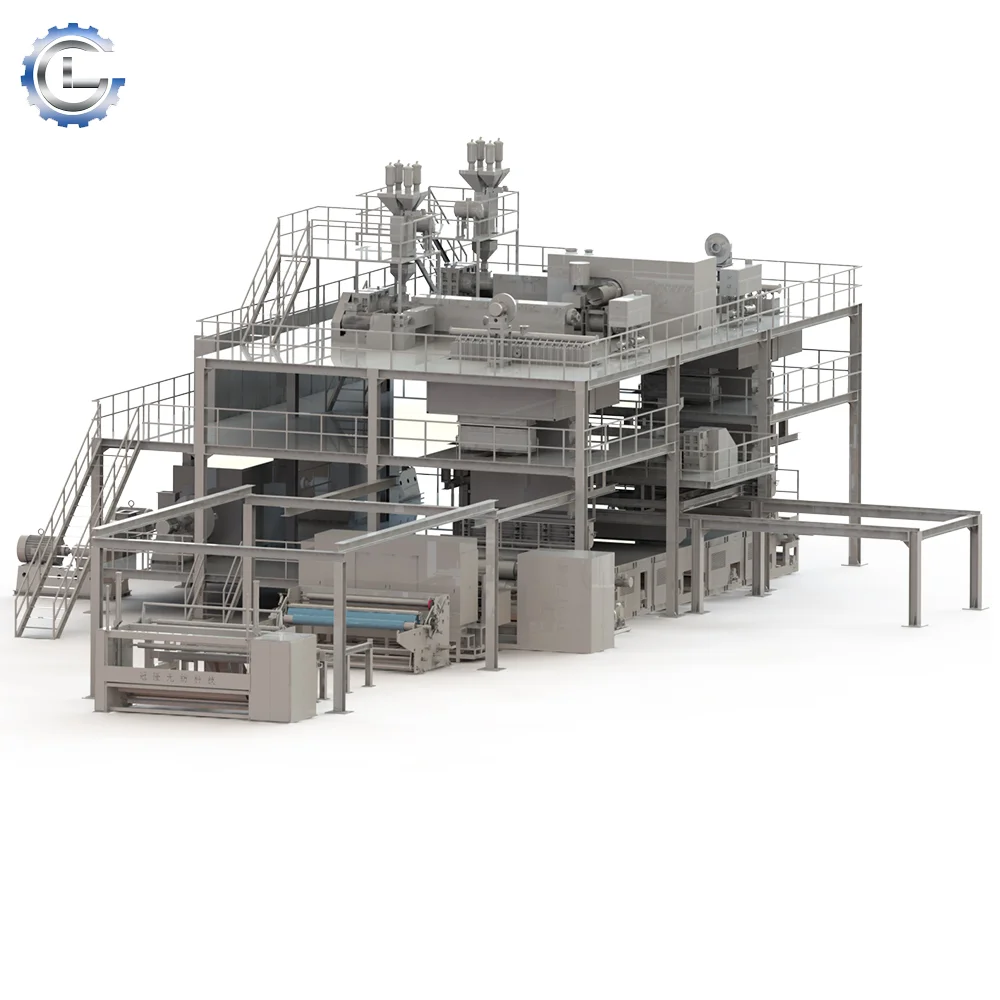A demanda por tecidos não tecidos aumentou em várias indústrias, Graças às suas propriedades e aplicativos únicos. Um dos métodos mais populares para a produção de tecidos não tecidos é o processo Spunbond, which is carried out using a PP spunbond nonwoven production line. This advanced manufacturing technique involves several integrated steps that transform polypropylene (PP) granules into high-quality nonwoven fabrics. In this post, we’ll explore the spunbond process in detail, highlighting its critical stages and the benefits of investing in this technology.

The Spunbond Process Explained
The spunbond process is a continuous operation that involves multiple steps, each crucial for producing the final nonwoven fabric. Here’s a breakdown of the process:
- Polymer Feeding: The journey begins with the feeding of PP granules into the machine. These granules are combined with any necessary additives to enhance the properties of the final product.
- Melting: The PP granules are heated and melted to form a viscous polymer. This step is critical as it prepares the material for the subsequent processes.
- Filtração: After melting, the polymer is filtered to remove any impurities. This ensures that the final product is free from defects and maintains high quality.
- Melt Pumping: The molten polymer is then pumped to the spinneret at a controlled rate. This step is vital for maintaining consistent production speeds and quality.
- Fiação: The molten polymer is extruded through a spinneret, creating continuous filaments. These filaments are then laid down in a random pattern to form the fabric.
- Quenching: Once the filaments are formed, they are rapidly cooled using a quenching system. This step solidifies the filaments and ensures they maintain their integrity.
- Drawing: The solidified filaments are then drawn to increase their strength and elasticity. This process also helps align the fibers, enhancing the fabric’s overall properties.
- Formação da Web: The drawn filaments are collected to form a web. This web is the foundation of the nonwoven fabric and can vary in density and thickness depending on the application.
- União: The final step involves bonding the web using heat and pressure. This process fuses the fibers together, creating a durable and cohesive nonwoven fabric.
- Winding: Finalmente, the bonded fabric is wound onto rolls, ready for further processing or distribution.
Benefits of the Spunbond Process
The spunbond process offers several advantages that make it a preferred method for producing nonwoven fabrics:
- High Production Efficiency: The continuous nature of the process allows for high output rates, making it suitable for large-scale manufacturing.
- Versatility: O PP spunbond nonwoven production line can produce fabrics in various weights, thicknesses, and properties, catering to diverse industrial needs.
- Cost-Effectiveness: By investing in a high-quality spunbond production line, manufacturers can benefit from lower material costs and increased operational efficiency.
- Eco-Friendly: Nonwoven fabrics produced through the spunbond process can be made from recyclable materials, contributing to sustainability efforts in the textile industry.
Understanding Nonwoven Machine Prices
When considering a PP spunbond nonwoven production line, it’s essential to evaluate nonwoven machine prices. Prices can vary based on several factors, including the machine’s capacity, technology, and features. Investing in a reliable and efficient production line can lead to significant cost savings in the long run, making it a wise choice for manufacturers looking to enhance their operations.
